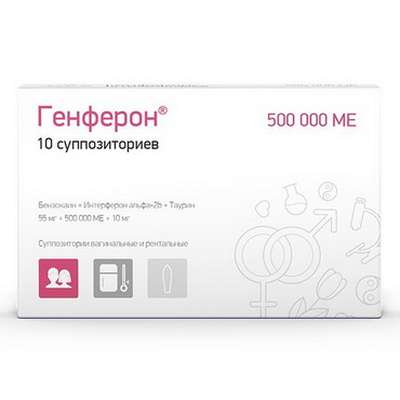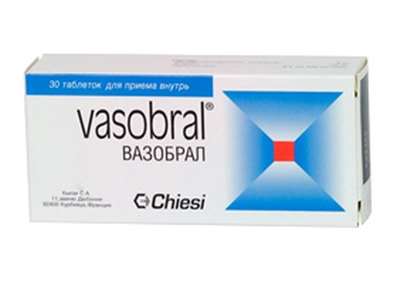Instruction for use: Ringer acetate
I want this, give me price
Dosage form: Solution for infusions
Active substance: Kalii chloridum + Calcii chloridum + Magnii chloridum + Natrii acetas + Natrii chloridum
ATX
B05BB01 Electrolytes
Pharmacological group
Rehydrating agent [Regulators of water-electrolyte balance and acid-base balance in combinations]
The nosological classification (ICD-10)
E86 Decreased fluid volume [hypovolaemia]: Water deficit recovery; Indemnification of isotonic deficiency of water; Compensation for isotonic sodium deficiency; Compensation BCC; Replenishment of water deficit with stored KShS; Replenishment of fluid volume; Replenishment of BCC; Replenishment of electrolytes with stored KHS; Hypovolemic conditions; Hypovolemic condition; Hypovolemia; Hypotonic form of hypohydration; Hypochloremia with dehydration; Dehydration of different origin; Dehydration in children; Substitution of plasma volume for blood loss in pediatrics; Substitution of plasma with its losses and burns; Isotonic dehydration; Isotonic form of hypohydration; Violation of the water-salt balance; Dehydration;Dehydration in acute intestinal infections; Acute hypovolemia; Loss of fluid in burns; Toxicosis with exsycosis
E87 Other disturbances of water-salt and acid-base state: Violation of acid-base balance; Water-electrolyte disturbances; Compensation for isotonic sodium deficiency; Replenishment of electrolytes with stored KHS; Deficiency of water and electrolytes; Depletion of alkaline blood reserve; Violation of the water-salt balance; Violation of water-salt metabolism; Violation of water-electrolyte exchange; Violation of KHS; Violation of electrolyte balance; Violations of the water-salt balance; Violations of the water-electrolyte state; Violations of the electrolyte balance; Loss of salts and fluids in diarrhea; Extracellular dehydration
E87.2 Acidosis: Acidosis of kidney; Acidotic shifts; Depletion of alkaline blood reserve; Decompensated acidosis; Acidosis in liver diseases; Respiratory acidosis; Ketoacidosis; Metabolic acidosis in acute intestinal infections; Alcoholic ketoacidosis; Metabolic acidosis; Hereditary renal acidosis; Renal acidosis; Renal tubular acidosis; Diabetic ketoacidosis; Diabetic acidosis; Renal tubular acidosis
K56.6 Other and unspecified intestinal obstruction: Intestinal obstruction; Mechanical violation of food passage; Intestinal obstruction; Sigmoid and cecum turn; Functional intestinal obstruction; Violation of intestinal patency; Syndrome of distal intestinal obstruction; Intestinal obstruction mechanical
K63.2 Intestinal fistula: Intestinal fistulae; Fistulas of the intestine
K65.0 Acute peritonitis: Subdiaphragmatic abscess; Abdominal abscess; Abscess of abdominal cavity; Abscess of intraperitoneal; Abscess of abdominal organs; Intraperitoneal abscesses; Intraperitoneal abscess; Acute purulent-inflammatory process of the abdominal cavity; Acute diffuse peritonitis; Intraabdominal abscess; Subdiaphragmatic abscess
R57.9 Shock, unspecified: Pain shock; Hemolytic shock; Neurogenic shock; Shock; Shock condition; Shock states
R58 Bleeding, not elsewhere classified: Abdominal apoplexy; Hemorrhagia; Haemorrhage of the esophagus; Hemorrhage; Generalized bleeding; Diffuse bleeding; Diffuse bleeding; Prolonged bleeding; Blood loss; Blood loss during surgical interventions; Bleeding during surgery and in the postoperative period; Bleeding during labor; Bleeding and haemorrhage in hemophilia B; Bleeding from the gums; Bleeding intraoperative abdominal; Bleeding against a background of coumarin anticoagulants; Hepatic hepatitis; Bleeding in hemophilia A; Bleeding at hemophilia A; Bleeding with inhibitory forms of hemophilia A and B; Bleeding due to leukemia; Bleeding in patients with leukemia; Bleeding; Bleeding due to portal hypertension; Bleeding due to hyperfibrinolysis; Drug bleeding; Local bleeding; Local bleeding due to activation of fibrinolysis; Massive blood loss; Acute blood loss; Parenchymal hemorrhage; Hepatic bleeding; Postoperative hemorrhage; Kidney bleeding; Vascular-platelet hemostasis; Traumatic bleeding; Threatening bleeding; Chronic blood loss
T30 Thermal and chemical burns of unspecified site: Pain syndrome with burns; Pain in burns; Pain with burns; Sluggishly healing post-burn wounds; Deep burns with a wet scab; Deep burns with abundant compartments; Deep burn; Laser burn; Burn; Burn of rectum and perineum; Burn with mild exudation; Burn disease; Burn injury; Superficial burn; Superficial burn of I and II degree; Superficial skin burns; After-burn trophic ulcer and wound; Post-burn complication; Loss of fluid in burns; Sepsis burn; Thermal burns; Thermal skin lesions; Thermal burn; Trophic after-burn ulcers; Chemical burn; Surgical burn
Composition
Solution for infusion - 1 liter
active substance: Sodium Chloride 5.91 g
Sodium acetate 2.82 g
Potassium chloride 0.3 g
Calcium chloride (in terms of anhydrous) 0.22 g
Magnesium chloride (in terms of anhydrous) 0.095 g
Excipients: water for injection - up to 1 liter
Ionic composition: sodium ion - 135 mmol; Potassium ion - 4 mmol; Calcium ion - 2 mmol; Magnesium ion - 1 mmol; Chloride ion - 108 mmol; Acetate - 34 mmol
Indicators: theoretical osmolarity - 284 mosmol / l.
Description of dosage form
Colorless transparent liquid.
Pharmachologic effect
Mode of action - Rehydrating.
Pharmacodynamics
Combined drug, eliminates metabolic acidosis, normalizes acid-base balance and water-electrolyte composition of blood. The therapeutic effect of the drug is due to a temporary increase in volume of blood circulation, the replacement of the deficiency of sodium, potassium and calcium ions, as well as the conversion of the acetate ion to bicarbonate.
Indications of the drug Ringer acetate
Shock, thermal injury, acute blood loss;
Hypohydration (isotonic and hypotonic forms);
Metabolic acidosis;
Acute diffuse peritonitis, intestinal obstruction (for correction of water and salt balance);
Decompensation of electrolyte disturbances in patients with intestinal fistulas;
Therapeutic plasmapheresis (dialysis-filtration method).
Contraindications
Hypersensitivity;
alkalosis;
Extracellular hyperhydration;
Condition, which is contraindicated the introduction of large volumes of fluid (severe chronic heart failure, cerebral edema, anuria).
With caution: heart failure; arterial hypertension; Renal and / or liver failure; Oliguria.
Side effects
Allergic reactions. With the introduction of large volumes of the solution - hyperhydration, hyperchloremic acidosis, hypernatremia.
Interaction
It is possible to increase the delay of sodium in the body while taking NSAID, androgens, estrogens, anabolic hormones, corticotropin, mineralocorticoids, vasodilators or ganglion blockers. When taking with potassium-sparing diuretics - the development of hyperkalemia.
Calcium in combination with cardiac glycosides increases the likelihood of their toxic effects.
Dosing and Administration
IV, by stream infusion. Adults - at a speed of 60-80 drops / minute or by stream infusion, a daily dose of 5-20 ml / kg, if necessary - 30-40 ml / kg.
Children - at a speed of 30-60 drops / min, daily dose - 5-10 ml / kg. The course of treatment is 3-5 days.
In medical plasmapheresis, 2-fold volume is introduced in comparison with the removed plasma (1,2-2,4 l), in combination with colloidal solutions (in case of pronounced hypovolemia).
Special instructions
In the treatment of severe hypovolemia, simultaneous therapy with colloidal solutions, blood and its components (due to the short-acting effect of the drug) is recommended. With prolonged administration of large doses of solution, it is desirable to monitor electrolytes in plasma and urine.
Release Form
Solution for infusion. For 250 and 500 ml in bottles made from LDPOLEN branded with LDPOLEN and Euro-capsules. Each vial is embedded in a cardboard bundle or a packet of PE film. By 12, 15, 24, 28 f. Without a bundle or packages are placed in a box of cardboard (for hospitals).
Manufacturer
CJSC "EAST-PHARM". 692503, Russia, Ussuriisk.
Conditions of supply of pharmacies
On prescription.
Storage conditions of the drug Ringer acetate
At temperatures below 25 ° C.
Keep out of the reach of children.
The shelf life of the drug Ringer acetate
3 years.
Do not use beyond the expiration date printed on the package.

 Cart
Cart





